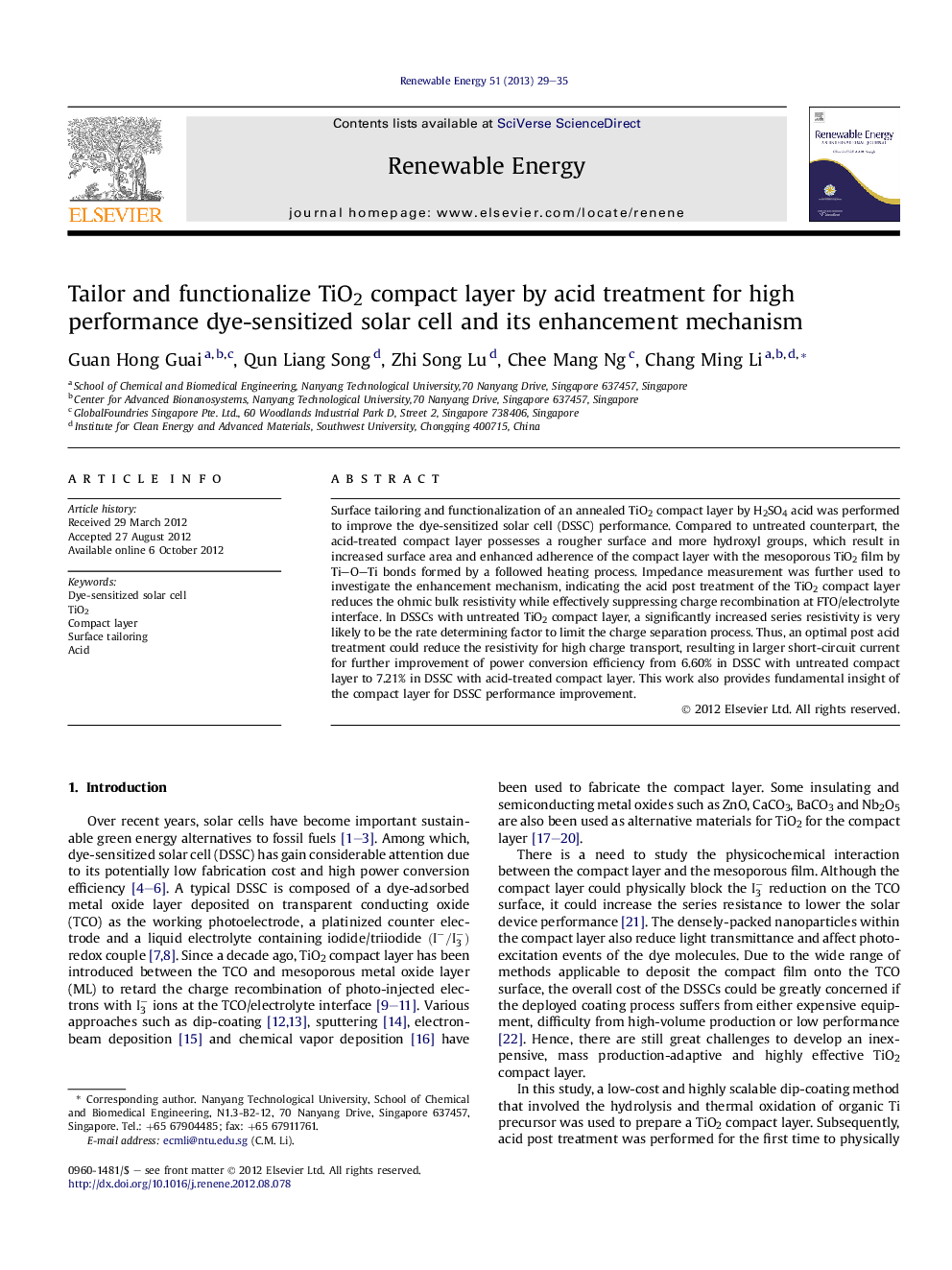| Article ID | Journal | Published Year | Pages | File Type |
|---|---|---|---|---|
| 300598 | Renewable Energy | 2013 | 7 Pages |
Surface tailoring and functionalization of an annealed TiO2 compact layer by H2SO4 acid was performed to improve the dye-sensitized solar cell (DSSC) performance. Compared to untreated counterpart, the acid-treated compact layer possesses a rougher surface and more hydroxyl groups, which result in increased surface area and enhanced adherence of the compact layer with the mesoporous TiO2 film by Ti–O–Ti bonds formed by a followed heating process. Impedance measurement was further used to investigate the enhancement mechanism, indicating the acid post treatment of the TiO2 compact layer reduces the ohmic bulk resistivity while effectively suppressing charge recombination at FTO/electrolyte interface. In DSSCs with untreated TiO2 compact layer, a significantly increased series resistivity is very likely to be the rate determining factor to limit the charge separation process. Thus, an optimal post acid treatment could reduce the resistivity for high charge transport, resulting in larger short-circuit current for further improvement of power conversion efficiency from 6.60% in DSSC with untreated compact layer to 7.21% in DSSC with acid-treated compact layer. This work also provides fundamental insight of the compact layer for DSSC performance improvement.
► TiO2 compact layer (CL) surface is tailored and functionalized using H2SO4 acid. ► The acid-treated CL has a rougher surface with more hydroxyl groups. ► This increases Ti–O–Ti bonds for better compact/mesoporous TiO2 interface adherence. ► It lowers ohmic bulk resistivity while suppressing charge recombination effectively. ► Better performance achieved by DSSC with acid-treated CL than with untreated CL.
